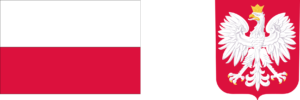As of December 2024, the Croatian Employment Service (CES) reported 91,563 registered unemployed individuals, a significant decrease of 20.4% (or 23,419 fewer people) compared to December 2023. However, unemployment rose slightly by 1.9% (1,666 individuals) compared to November 2024.
Current Statistics and Job Openings
Recent CES data shows 94,469 individuals currently registered as unemployed, with 16,151 job vacancies advertised. In December 2024, 11,799 new individuals joined the unemployment register, a 1.3% decline compared to the same period in 2023. Of these, 79.9% (9,422) entered due to employment termination, while 2.5% (298) came from full-time education, and 17.6% (2,079) from inactivity.
Exits from Unemployment Register
A total of 10,133 people left the unemployment register in December 2024, a slight 0.9% decrease from the previous year. Of these, 6,695 individuals found employment, with 91.6% (6,131) employed in regular jobs and 8.4% (564) engaged in other business activities.
Employment was most prominent in sectors such as:
- Wholesale and retail trade: 1,038 people (16.9%)
- Accommodation and food services: 1,016 people (16.6%)
- Manufacturing: 632 people (10.3%)
- Health and social care: 487 people (7.9%)
Regional Insights
Split-Dalmatia County led in employment through hiring, accounting for 1,003 individuals (16.4% of total employed). Other significant contributors were:
- City of Zagreb: 788 people (12.9%)
- Osijek-Baranja County: 661 people (10.8%)
- Vukovar-Srijem County: 412 people (6.7%)
In terms of unemployment, Split-Dalmatia County recorded the highest number of unemployed individuals (16,588 or 18.1% of the national total), followed by Osijek-Baranja County (11,569 or 12.6%) and the City of Zagreb (10,040 or 11%). The lowest unemployment figures were in Lika-Senj County (1,159 or 1.3%).
Cash Benefit Utilization
In December 2024, 23,092 unemployed individuals (25.2% of the total) received cash benefits. This marked a slight 0.2% decrease (47 fewer beneficiaries) compared to December 2023.
The data underscores continued improvements in Croatia’s labor market, though regional disparities and seasonal fluctuations in unemployment remain areas of focus.






